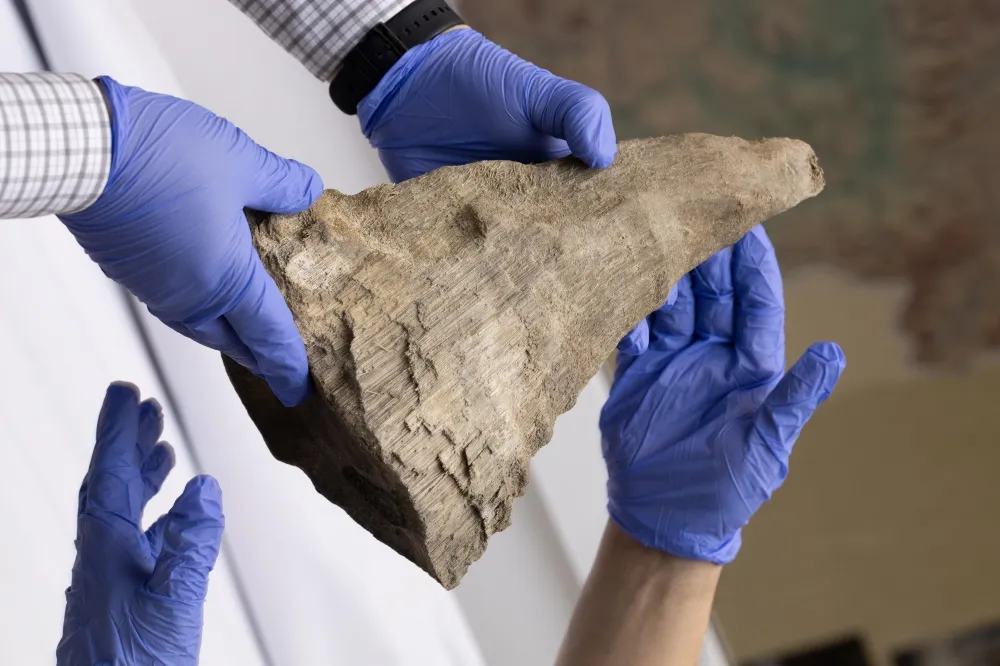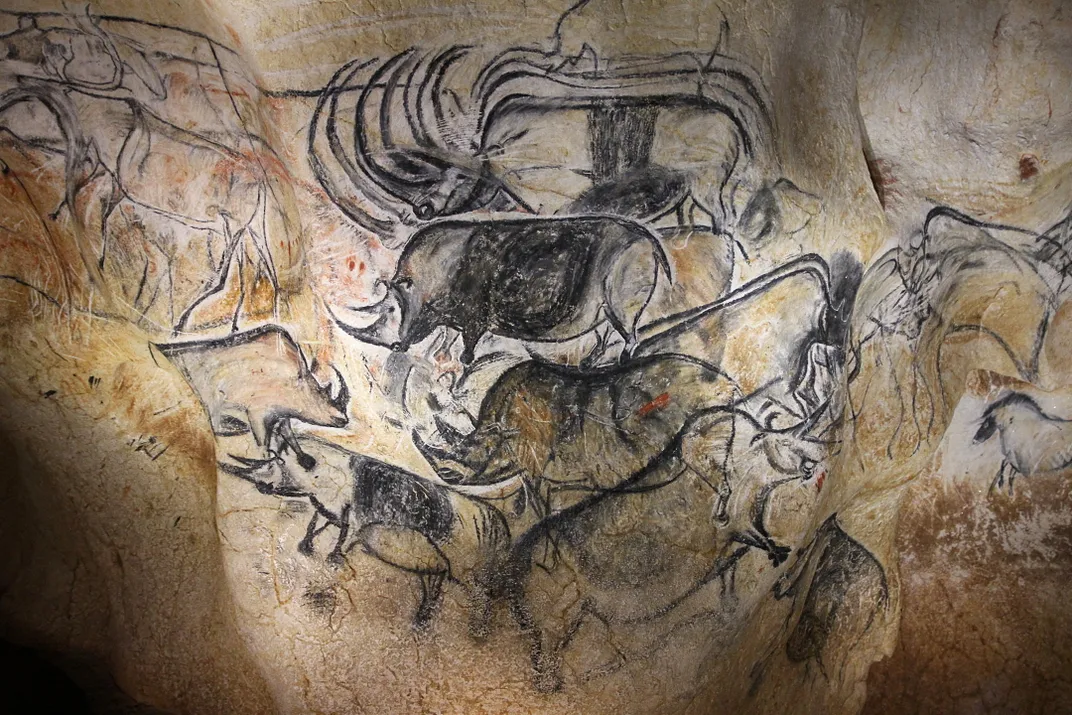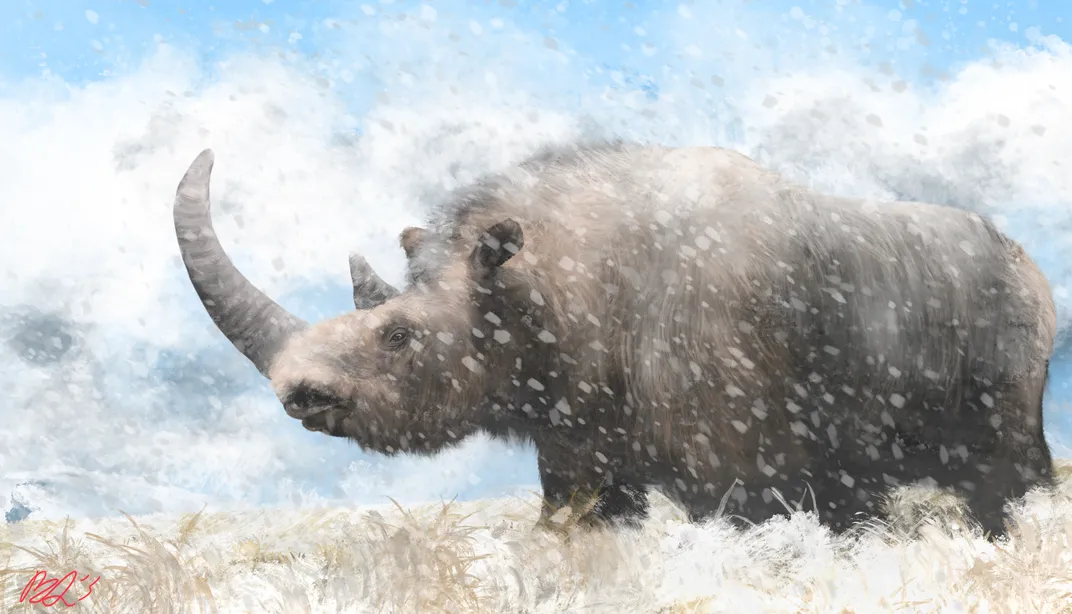Miners Unearth a Mummified Woolly Rhino in Siberia, With an Intact Horn and Soft Tissue
The rare discovery will help scientists find out more about the prehistoric animal’s development, diet and living conditions

Though the woolly rhinoceros might not be as well known as its contemporary, the woolly mammoth, it roamed the Earth for millions of years—until its extinction about 10,000 years ago, at the end of the most recent ice age. Humans immortalized the furry rhinos in surprisingly accurate cave art illustrations, providing some of the knowledge that researchers have about the creatures today.
Now, a recent discovery made by gold miners in Siberia will help scientists get an even better understanding of the massive prehistoric animals. Earlier this summer, miners accidentally unearthed the mummified remains of a woolly rhino in a quarry in the rural Oymyakonsky District of Russia. The preserved mammal’s body included soft tissue and an intact horn.
In an August 5 statement, North-Eastern Federal University (NEFU) rector Anatoly Nikolaev says the find will allow his university and its Mammoth Museum to pursue more in-depth research into the region’s ancient fauna and climate history.

At 6 feet tall and 16 feet long, woolly rhinos were imposing plant-eaters during the Ice Age. Today, rhinos have one or two horns, depending on the species—the prehistoric rhinoceros had two, and its front horn sometimes grew more than three feet long.
Images of the remains were first posted on the messaging app Telegram on August 2, per Live Science’s Hannah Osborne.
NEFU visited the site shortly after the discovery to retrieve the rhino’s horn, and the rest of the remains are scheduled to be excavated in the fall. The woolly rhinoceros was a mature individual, though its age and sex can only be determined after more thorough study.
Maksim Cheprasov, senior researcher and head of the laboratory of the NEFU Mammoth Museum, says in the statement that more research could potentially uncover genetic links between this rhino and previous finds.
Soft tissue might also provide the opportunity to extract ancient DNA, per Live Science.
Northeastern Siberia, where the remains were found, was likely the last stronghold of the woolly rhinoceros before the species went extinct, reported Science’s Darren Incorvaia in June. A study published at the time suggested woolly rhinos were driven to extinction by a combination of climate change and human hunting, which together trapped the creatures in fragmented habitats that couldn’t support them.
That study can shed light not only on the woolly rhino’s fate, but that of the woolly mammoth and other enormous prehistoric animals. “There’s been this debate for a long time of what killed the megafauna,” Damien Fordham, a global change ecologist at the University of Adelaide in Australia and co-author of the June study, told Science. Researchers have often pointed to either climate change or human hunting. But the paper shows “it’s not one or the other,” he adds. “Both were playing out on the landscape.”

The mummified animal marks the sixth woolly rhino specimen to be found in Yakutia (also known as the Republic of Sakha) in northeastern Siberia, according to the NEFU statement. The most recent discovery prior to this one was uncovered in 2020, when a preserved woolly rhino emerged from muddy, thawing permafrost. Also in 2020, researchers described the discovery of a 57,000-year-old wolf pup that had been mummified in permafrost in Canada’s Yukon territory.
In cold areas, the permafrost allows for a better preservation of prehistoric remains than in warmer regions of the planet. Even so, mummified remains in permafrost are rare due to the specific conditions they require to form.
“The animal has to die in a permafrost location, where the ground is frozen all the time, and they have to get buried very quickly, like any other fossilization process,” Des Moines University paleontologist Julie Meachen said in a statement after the wolf pup find. “If it lays out on the frozen tundra too long, it’ll decompose or get eaten.”

